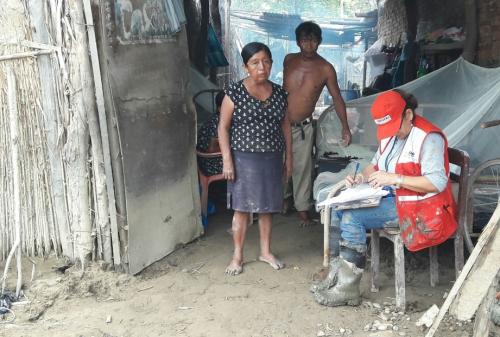Poverty in Peru, the latest statistics from the state
Can a Peruvian truly and adequately live with dignity on 150 to 415 dollars per month, send their children to school, attend to their health, eat, etc.?
- Información

The last Peruvian Population and Housing Census was carried out by Peru’s National Institute of Statistics and Informatics (INEI) in 2017 [1]. Its statistics were recently published, and some interesting details about poverty stand out.
According to the INEI, people in Peru who are not poor have individual incomes above 338 soles, or 150 dollars, per month. People in extreme poverty are defined as those who earn less than 183 soles, or 80 dollars, per month.
The minimum living wage is Peru is 930 soles, or 415 dollars, per month. An individual with this income, defined by the state as the minimum living wage, is no longer poor, is middle class, and now has an income that supposedly could cover the needs of an additional person. Is this true?
By this logic, we have moved from 42.4% of the population in poverty in 2007 to 21.7% of the population (more than 6 million people) in poverty in 2017. According to this estimate, moreover, poverty in urban areas is around 15%, and poverty in rural areas is 44%. This inequality is enormous.
To date, these statistics find Cajamarca to be the poorest province in Peru (52% poverty rate), the same region where Newmont Mining, Buenaventura and the World Bank operate Yanacocha, the third-largest gold deposit in the world.
On the other hand, according to these same statistics, extreme poverty in Peru decreased from 11.2% in 2007 to 3.8% in 2017. As in the previous case, the inequality between urban and rural areas is abysmal: 1.2% and 12.8% extreme poverty respectively. And like in the previous case, extreme poverty was again concentrated in Cajamarca, with more than 20% of the population in this situation.
The population weight of the urban and rural poor is equal, with nearly the same number of poor urban people (3,752,000) as poor rural people (3,154,000). However, the difference is in the absolute quantities – apparently there is more population but less poor people in urban areas, with more opportunities to earn more than $150 per month in an urban area than in a rural area.
Of the rural poor, 33% speak an indigenous language, and more than 40%, indigenous and non-indigenous, are 0-14 years old. 70% do not have titles to their property, 42% live in adobe houses, and 58% live on dirt floors. 73% of the rural poor have no access to a public water source, and 50% have only reached a primary school level of education. More than 80% do not have health insurance, and 53% work in agriculture (we no longer cross this statistic with technical training and access to credit, and the percentage of agricultural workers that receive both is less than 10%).
In 2014, a local newspaper read: "Peru has the opportunity to become a first world country in the next 13 years, by 2027, if it achieves a sustained annual growth of 6%, according to an estimate by the Institute of Economics and Business Development (IEDEP) of the Chamber of Commerce of Lima (CCL) [2]" The question is: with these socioeconomic indicators, is it true that we will be a first world country in 10 years? Can a Peruvian truly and adequately live with dignity on 150 to 415 dollars per month, send their children to school, attend to their health, eat, etc.?
- Jorge Arboccó, Peruvian anthropologist.
Del mismo autor
- Comunicación, periodismo y pueblos indígenas en tiempos de pandemia 22/02/2021
- Perú: Invisibles entre el verde dólar 16/09/2020
- Perú: Excluidos de la educación y otros derechos en tiempos de COVID 20/05/2020
- Perú: Rondando la pandemia 15/05/2020
- Nuestros “amigos” los mineros 20/09/2019
- Poverty in Peru, the latest statistics from the state 06/11/2018
- La pobreza en el Perú, los últimos resultados del Estado 25/10/2018
- Territorio indígena, derechos humanos y conservación 17/11/2016
- Poverty, Hunger and Family Farming 27/11/2015
- Pobreza, Hambre y Agricultura Familiar 04/11/2015








